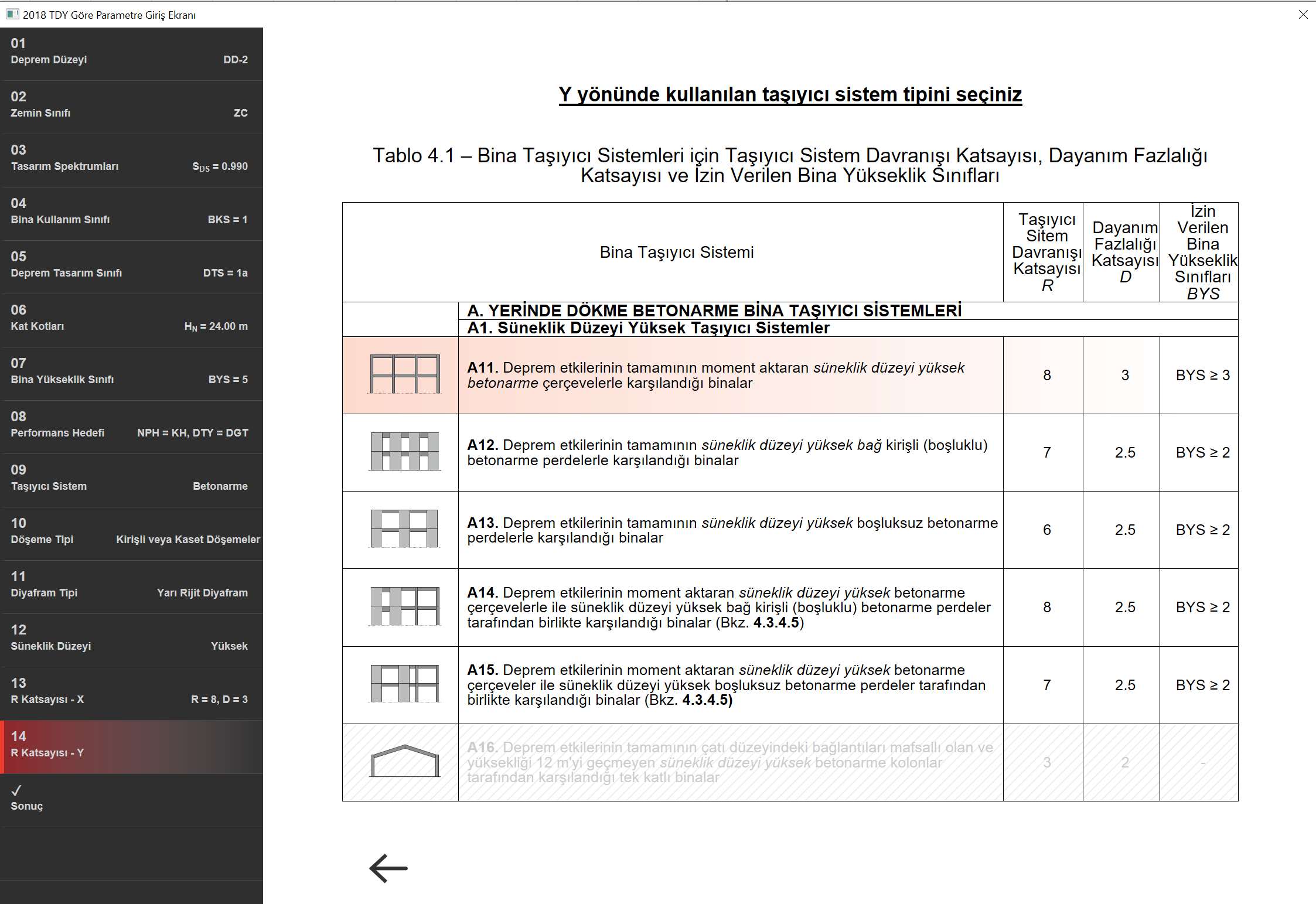Structural Systems for Perpendicular Directions (4.3.4.2)
The ductility levels of the carrier systems in perpendicular directions cannot be chosen differently, but must be the same
. It is controlled automatically.
Different R coefficients and corresponding D coefficients can be used in perpendicular directions. According to Table 4.1 , the highest permitted Building Height Class is determined automatically as unfavorable for those given in two directions.
ICONS
D = Strength Redundancy Coefficient
R = Carrier System Behavior Coefficient
According to Article 4.3.4.2 of TBDY, the ductility levels of the structural systems in vertical directions should be the same. Different bearing systems and different R and D coefficients can be selected in perpendicular directions, but the ductility levels of these carrier systems must be the same. If the ductility level of the bearing system in the (X) direction of the structure is normal, the ductility level in the (Y) direction must be normal.
With the TBDY 2018 Wizard , the ductility levels of the carrier systems in perpendicular directions are selected the same. As can be seen in the picture below, there are structural system options with high ductility level in Table 4.1 on the R coefficient selection screen of a structure with high ductility level.

Next Topic
